Our Guide To The Ningaloo Solar Eclipse

Make sure you’ve got everything ready for the Ningaloo Solar Eclipse.

What’s That Convoy Of Lights
That’s not Superman, and we’ll let you know what they are.
We Review The Thrawn Trilogy
This is the book series that started the Star Wars
Expanded Universe.
Shooting The Solar Eclipse
Learn from one of WA’s best Astrophotographers about what you need to do to get the best out of your eclipse photos.
MARCH
NEWSLETTER
2023
Do you have a passion for space and astronomy but never had the time to study it?

The Perth Observatory has organised a 5-week introductory course so you can learn about our amazing universe. Each week we’ll cover a different topic. We’ll have a Q/A session with tea and coffee before we head up to the telescopes for some hands-on practical experience. The course includes handouts of the relevant data, diagrams and references.
Arthur Harvey, our presenter for this course has been part of the Perth Observatory Volunteer Group since 2008 and has run Night and Day Tours. Upon completion of the 5-week course, each participant will receive a special Perth Observatory certificate.

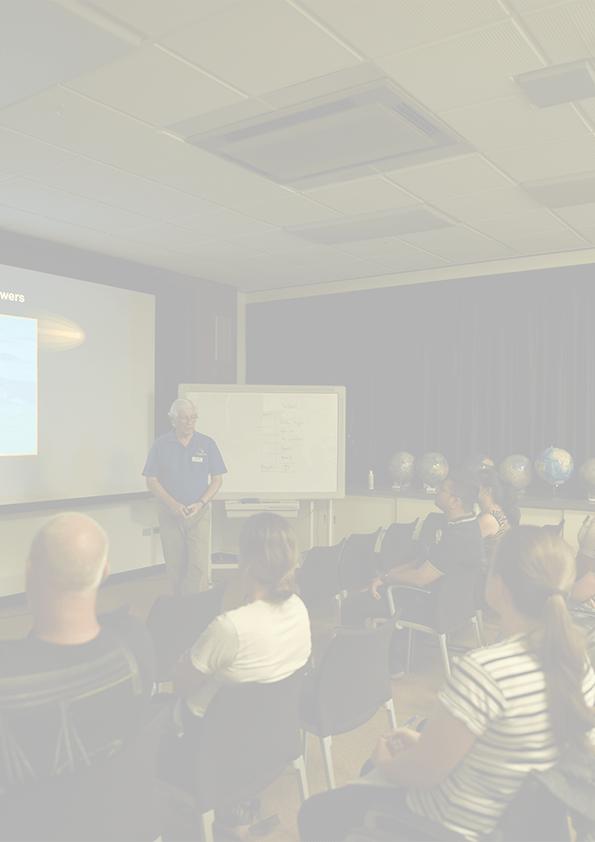
ASTRONOMY 101 COURSE

The contemplation of celestial things will make a man both speak and think more sublimely and magnificently when he descends to human affairs.
- Cicero, Roman Statesman
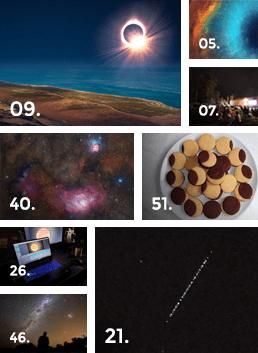
Contents 05 A View Through The Eyepiece 07 Upcoming Events 09 Get Ready For the Ningaloo Eclipse 16 Check Out Out Blueprints Expo 17 Thrawn Trilogy Review 21 That’s not Superman, That’s Starlink 26 Live Streaming The Eclipse 27 Shooting The Eclipse Find Us Here

30 From The Desk Of The Program Manager 33 What’s In April’s Skies 37 What’s In May’s Skies 40 What’s In June’s Skies 46 Telescopes Under WA’s Skies 47 The Astroshop 51 Solar Eclipse Cookies 54 The Funny Side Editorial Zoé Fraussen Editor Matt Woods Designer Contributors Michelle Ashley-Emile, Matt Woods, Ronny Kaplanian, Roger Groom and Zoé Fraussen Subscriptions Click Below to subscribe to our newsletter Front Cover Image By Roger Groom Back Cover Image By Roger Groom
A View Through The Eyepiece
Kaya and Welcome
Perth Observatory Volunteer Group acknowledges we operate on the traditional lands of the Whadjuk-Noongar people.
We are in the season of Bunuru, the hottest of the year. Fret not though, next is Djeran which will bring along some cooler Autumn weather and some beautiful night sky viewings. Whilst the days may still be hot the nights at the Observatory are definitely cooler, don’t forget a jumper if you are coming at night.
This newsletter brings you information on the long-awaited Solar Eclipse in Exmouth on 20th April. Don’t miss out! Even if it is just watching out livestream on timeanddate.com or coming along to the Observatory to see 70% of the eclipse. We also have eclipse glasses in our shop, ready for you to safely view the sun and not hurt your eyes.
Learn about Starlink and ESA in this quarter’s newsletter as well as a review of the book series that started the Star Wars EU. You won’t want to miss out!
So, welcome to the New Year and the first newsletter of 2023, there seem to be many interesting and exciting astronomical things happening this year. Make sure you also keep up with the Observatory on our social media accounts, we have Facebook, Twitter, and Instagram too, so you don’t miss anything.
POVG pay our respects to Noongar Elders past, present, and emerging.
Zoé Fraussen Editor
PAGE 05 2023 AUTUMN EDITION

The Helix Nebula
PAGE 06 2023 AUTUMN EDITION
NGC 7293
Upcoming Events
25th of March
Astrophotography Workshop
Time: 1 pm - 10 pm (Doors open at 12:30 pm)
Price: $280 per person

Want to get started in astrophotography?
We’re running a workshop where you’ll learn to use your camera and a telescope. You’ll also learn what your equipment is capable of so you can try your hand at nightscapes and deep-sky photography.
It’s a fantastic full day of astrophotography that gives you a small group experience learning.

Sold Out!!!
5th of April
Star Trek Night Tour
Time: 7:30 to 9 pm (Doors open at: 7 pm)
Price: $55 per adult, $40 per concession and $30 per child

Boldly go where no one has gone before and join us for our annual Star Trek Day celebration! Dress in your finest Starfleet uniform, grab your phaser and tricorder and beam up to the observatory for a night of intergalactic exploration.
Our volunteers will take you on a journey through Federation space, showcasing stunning celestial objects and massive nebulas in the Orion Syndicate’s territory.
PAGE 07 2023 AUTUMN EDITION
Image Credit: Matt Woods
12th of April
Solar Eclipse Chasing Talk
Time: 6:30 pm - 8 pm (Doors open at 6 pm)

Price: $60 per family, $20 per adult, $15 per concession and $10 per child
Join us for an incredible opportunity to hear from Dr Kate Russo, an author, psychologist, and expert eclipse chaser. In her talk, Kate will share her insights and experiences from chasing and witnessing twelve total solar eclipses in 11 different countries.
Her talk will be full of valuable info and insights into the experience of totality, offering a glimpse into the science, psychology, and culture of this incredible natural phenomenon.
4th of May
Star Wars Night Tour
Time: 7:30 to 9 pm (Doors open at: 7 pm)
Price: $55 per adult, $40 per concession and $30 per child
May the 4th be with you! Celebrate Star Wars Day in style by heading to the Perth Observatory in your best Jedi robes and lightsaber(s).
Our expert telescope operators will guide you through the cosmos and show you stunning objects that will transport you to a galaxy far, far away.
20th of April
Solar Eclipse
Time: 10 am - 1 pm (Doors open at 9:30 am)
Price: $20 per adult, $15 per concession and $10 per child
Join us at the Perth Observatory for a viewing party with fellow astronomy enthusiasts. Experience 70% coverage of this unique astronomical event through our solar telescopes, sun spotters, and watch our live stream from Exmouth.
Kids will enjoy our fun and educational activities, and all tickets come with protective solar glasses.
Sold Out!!!
25th of May
Towel Day Night Tour
Time: 7:30 to 9 pm (Doors open at: 7 pm)
Price: $55 per adult, $40 per concession and $30 per child



Join us on the 25th of May to celebrate Towel Day, an annual tribute to the author Douglas Adams and his beloved series, The Hitchhiker’s Guide to the Galaxy. Bring your towel and come to the Perth Observatory for an unforgettable night.
Our volunteers will be ready to take you on a grand tour of the Southern Hemisphere’s sky with a wide range of targets including nebulae, and enormous star clusters.
PAGE 08 2023 AUTUMN EDITION
Get Ready For the Ningaloo Total Solar Eclipse
 By Matt Woods
By Matt Woods
In just under a month on April 20th, 2023, the people of Western Australia, Timor-Leste, and parts of Indonesia will be able to witness a rare astronomical event - a Total Solar Eclipse. During this event, the Moon will block out the entire disc of the Sun for 62 seconds. This is an incredibly rare occurrence and the first time that it will happen in Western Australia since the 20th of Jun 1974.
The Total Solar Eclipse will allow astronomers to study the Sun’s Corona and Chromosphere. The Corona is the outermost layer of the Sun’s atmosphere, made up of hot, ionized gas that extends far beyond the visible surface of the star. The temperature in this region can reach millions of degrees Celsius, making it one of the hottest places in space. Studying the Sun’s Corona is essential for
Image Credit: Tourism Western Australia
understanding how stars interact with their environment and how they evolve over time. It also provides astronomers with an excellent opportunity to study the Sun’s magnetic fields and how they shape the Corona as well.
There are four types of Solar Eclipses: Total, Annular, Partial, and Hybrid. The Ningaloo 2023 Solar Eclipse is special because it is a rare “Hybrid Eclipse.” A hybrid eclipse is a type of solar eclipse that looks like an annular solar eclipse or a total solar eclipse, depending on the observer’s location along the central eclipse path. Observers in Exmouth will witness a Total Solar Eclipse during the 62 seconds of darkness as the Moon casts a 41km wide path over Western Australia’s Northwest Cape into darkness.
PAGE 09 2023 AUTUMN EDITION
Total Solar Eclipses occur somewhere on Earth about every 18 months. However, experiencing the Sun’s corona appearing around the black shadow of the Moon is the highlight of a Total Solar Eclipse event. During totality, day will become almost night so the stars and planets become visible, the air temperature drops, and animals may change their behaviour. In ordinary daylight, the corona of the Sun isn’t visible, but it can be seen during a Total Solar Eclipse, it looks like a white halo.
For those who are lucky enough to witness this extraordinary event, it will be an unforgettable experience. However, there are some important tips that people should keep in mind while preparing to witness this rare event. Firstly, never look directly at the
Sun, even during an eclipse, as it can cause permanent eye damage. Secondly, make sure to have reputable solar eclipse glasses. The Perth Observatory ($2.50 each), Binocentral in Joondalup, or camera shops like Camera House Midland or Camera Electronic in Leederville are recommended for purchasing these glasses.
Visitors to the area should be aware of the limited accommodation available and should plan accordingly. The Ningaloo Eclipse website and the Exmouth Solar Eclipse Facebook group page, are excellent for planning your stay up they. Additionally, Time and Date has a great page for details about the eclipse itself.

PAGE 10 2023 AUTUMN EDITION
They are expecting between 10,000 to 50,000 people, so it’s best to come prepared with food, water, spare tyres, oil, and fuel for the car, as towns may run out of these items. Visitors should also ensure that their car is serviced before the trip and should avoid parking on long grass when you’re up there to avoid starting fires.
It is important to note that there are many mobile blackspots up north, and visitors should bring first aid kits and an Emergency Personal Locator Beacon just in case they get into trouble. It’s best to have a Telstra prepaid sim card if you’re normally have an Optus or Vodafone sim in your phone. SpaceX’s Starlink (Superfast satellite broadband internet) is also now available for the road and you can use it now in the Exmouth region. We also recommended to space out the trip as it is a long drive.

PAGE 11 2023 AUTUMN EDITION
Image Credit: JOE SEXTON / JESSE ANGLE
A solar eclipse shows us that even though something might block our shine temporarily, your glow will reappear eventually. Be patient.
We have a team going up to Exmouth to live stream the eclipse with our friends at Time and Date, but we’ll be leaving early to do astronomy nights along the way with
Astrotourism WA has two other teams doing astronomy nights around most of Western Australia:

Image Credit: Time and Date
The path of the eclipse.
WA Date Town Register 14/04/23 Dalwallinu (Dalwallinu Recreation Centre) No Need 15/04/23 Morawa (Gutha Hall) Register Here 16/04/23 Murchison (Community Town Hall, Murchison) Register Here 17/04/23 Mullewa (Mullewa Recreation Centre) Register Here 19/04/23 Bullara Station No Need 22/04/23 Gascoyne Junction (Town Pavilion) Register Here 23/04/23 Useless Loop (Useless Loop Primary School) No Need 24/04/23 Dongara No Need
Astrotourism
Date Town Register 25/03/23 Three Springs (Three Springs Golf Club) Register Here 31/03/23 Lake Grace (Jam Patch Nature Reserve) Register Here 03/04/23 Chittering (Lower Chittering Hall) Register Here 05/04/23 Wickepin (Wickepin Community Centre) Register Here 08/04/23 Narembeen (Narembeen Recreation Centre) Register Here 11/04/23 Bakers Hill (Bakers Hill Recreation Centre) Register Here 12/03/23 Wongan Hills (Wongan Hills Airport) Register Here 13/03/23 Mingenew (Mingenew Recreation Centre) Register Here 14/03/23 Cervantes (Cervantes Community Recreation Centre) Register Here 14/03/23 Greenough (Central Greenough Cafe & Visitor Centre) Register Here 16/03/23 Denham (Shark Bay Recreation Centre) Register Here 17/03/23 Carnarvon (Carnarvon Space & Technology Museum) Register Here 21/03/23 Onslow (Onslow Foreshore) Register Here 22/03/23 Perenjori (Perenjori Caravan Park) Register Here 23/03/23 Carnamah (MacPherson Homestead) Register Here 26/03/23 Darkan (One Gate Farm Nature Camp) Register Here 28/03/23 Narrogin (Thomas Hogg Oval) Register Here PAGE 12 2023 AUTUMN EDITION
Exmouth does have three astronomy nights on the 19th, 20th, and 21st of April, and also has the 2022 Astrofest Astrophotography Exhibition for the whole of April at the Tantabiddi Gallery in the Ningaloo Centre, which is free to see. For more info for these events and more, visit the Ningaloo Eclipse website’s event page.
If you can’t get into Exmouth, Onslow and Carnarvon are also going to be very good places to see the eclipse and If you can’t leave Perth, don’t worry, you’ll get a partial eclipse where the Moon will cover 70% of the Sun, and we’ll have our own eclipse event at the Observatory so you can safely see this rare astronomical phenomenon.
If you do miss out completely, don’t worry, Western Australia will get 5 Total Eclipses in the next 50 years:
22nd Jul 2028 - Partial Solar Eclipse in Perth (Total Eclipse path goes through North WA)
13th Jul 2037 - Partial Solar Eclipse in Perth (Total Eclipse path goes over Geraldton)
26th Dec 2038 - Partial Solar Eclipse in Perth (Total Eclipse path goes over Onslow)
17th Dec 2066 - Partial Solar Eclipse in Perth (Total Eclipse path goes over Margaret River, Augusta, Denmark, and Albany)
31st May 2068 - Total Solar Eclipse in Perth
If you’re experiencing your first total lunar eclipse, it’s best to fully immerse yourself in the moment with your loved ones during totality. Consider disconnecting from technology such as mobile phones and tablets to fully appreciate the breathtaking event unfolding in the night sky.
The experience is truly awe-inspiring, and it’s likely to leave a lasting impression on you. After totality, you may find yourself eagerly anticipating the next opportunity to witness such a stunning celestial display. So, be present, embrace the magic of the eclipse, and let it move you.

PAGE 13 2023 AUTUMN EDITION
Image Credit: ESO/P. Horálek/Solar Wind Sherpas project
The moon, single-handedly manages to stop the gigantic sun from glowing. It reminds us that you are never too small to make a difference.

PAGE 14 2023 AUTUMN EDITION
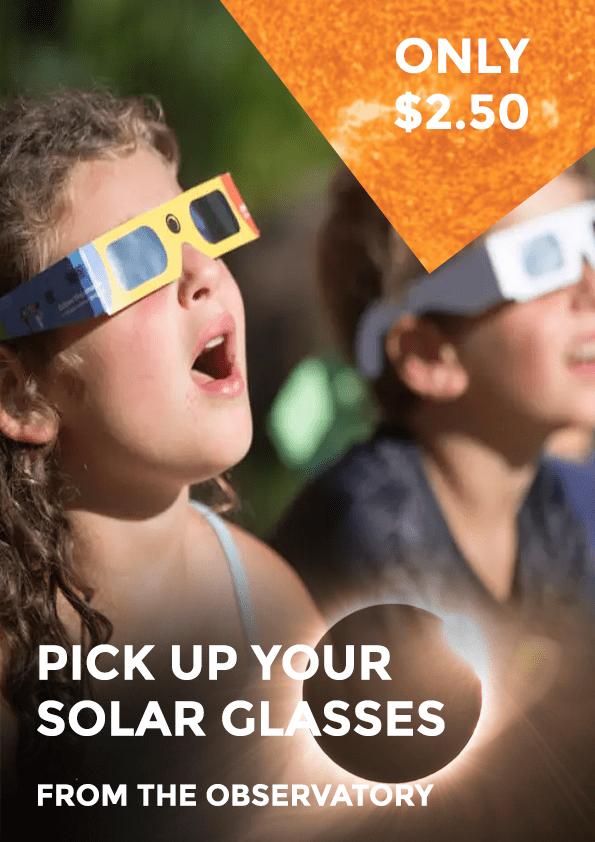
PAGE 15 2023 AUTUMN EDITION
Check Out Out Blueprints Expo
If you have visited the Observatory recently, you may have noticed our latest exhibition space showcasing stunning Astrophotography from the Astrofest Astrophotography competition. However, it’s now time to say farewell to these mesmerizing shots of the night sky and introduce a new exhibit.
If you have previously visited the Observatory, you must have heard about its rich history spanning over 127 years. The Observatory began at Mt. Eliza and later moved to Bickley, acquiring new telescopes and building new domes. It’s now run by volunteers who have contributed significantly to its growth.
Our new exhibition features a collection of blueprints that demonstrate the evolution of the Observatory over time. Starting with the original building blueprints and foundation stone from Mt. Eliza, the exhibit also showcases the construction of the Lowell Dome and the modern Octagonal Dome. As you explore the exhibit, you’ll discover the intricate details that go into stargazing and the incredible work done by drafters and engineers.
Don’t miss the chance to visit the exhibit and learn about the rich history of the Perth Observatory. These blueprints will be on display until June, so make sure to plan your visit soon!

PAGE 16 2023 AUTUMN EDITION
Do you
of what it means to defy the Empire? The Thrawn Trilogy Review
 By Matt Woods
By Matt Woods
The Star Wars Heir to the Empire trilogy, written by Timothy Zahn, is a must-read for any Star Wars fan. It’s an exciting book series which should have served as Episodes 7, 8, and 9.
The story is set five years after the events of Return of the Jedi, and the Rebel Alliance is now the New Republic. However, a new threat emerges in the form of Grand Admiral Thrawn, who is leading the remnants of the defeated Empire. Thrawn is a brilliant strategist who poses a significant threat to the New Republic. The story follows the adventures of Han Solo, Princess Leia, Luke Skywalker, and Chewbacca as they try to thwart Thrawn’s plans and save the galaxy.
The trilogy is filled with fantastic characters, including Grand Admiral Thrawn, Mara Jade, Talon Karrde, Captain Pellaeon, and Jacen and Jaina Solo, Han and Leia’s true children.
The characters are well developed, and their interactions are engaging and enjoyable to read.
The success of the Heir to the Empire trilogy is cited as the beginning of the Star Wars Expanded Universe. The series reached #1 on the New York Times Best Seller list, and the trilogy sold a combined total of 15 million copies. It has been called “influential, much-loved, and ground-breaking,” and was voted into NPR’s top 100 science-fiction and fantasy books in 2011.
If you enjoy the series, I recommend reading Timothy Zahn’s Hand of Thrawn duology, Survivor’s Quest, and Outbound Flight. Zahn’s Thrawn Trilogy (2017-2019) and Thrawn Ascendancy Trilogy (2020-2021), written since Disney took over, are also excellent additions to the series.

PAGE 17 2023 AUTUMN EDITION
require a reminder
Other books that Star Wars fans will enjoy include Michael Stackpole’s X-Wing book series, Kevin J Anderson’s Jedi Academy Trilogy, the Young Jedi Knights series, and the I Jedi book.

Overall, the Star Wars Heir to the Empire trilogy is a must-read for any Star Wars fan. It is a well-written and exciting series that adds depth to the Star Wars universe. If you haven’t read it yet, I highly recommend giving it a chance.
Image
Matt’s Rating
PAGE 18 2023 AUTUMN EDITION
Credits: Books - Del Rey; Chimaera ISD - Darren Tan; Thrawn - Two Dots
Aurora Australis Over The Perth Observatory
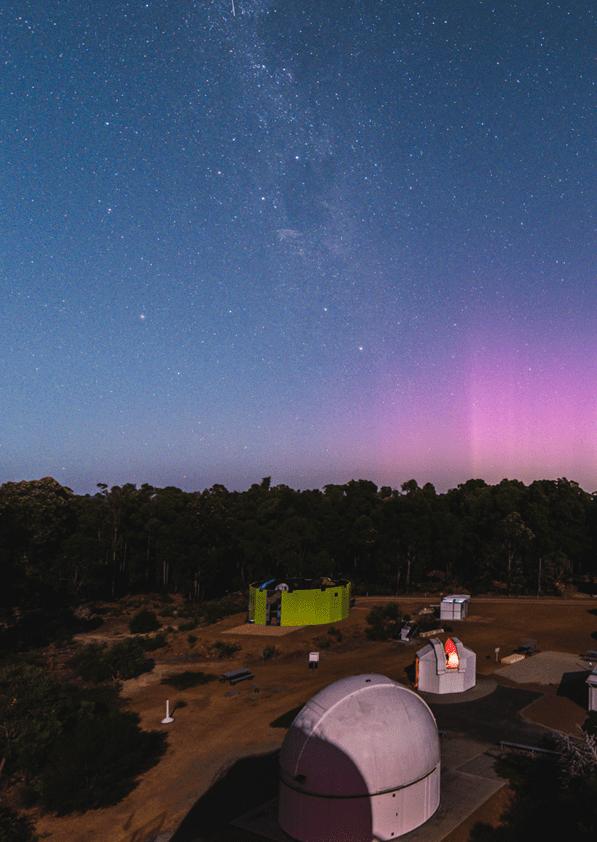
PAGE 19 2023 AUTUMN EDITION
Image Credit: Matt Woods

PAGE 20 2023 AUTUMN EDITION
That’s not Superman, That’s Starlink
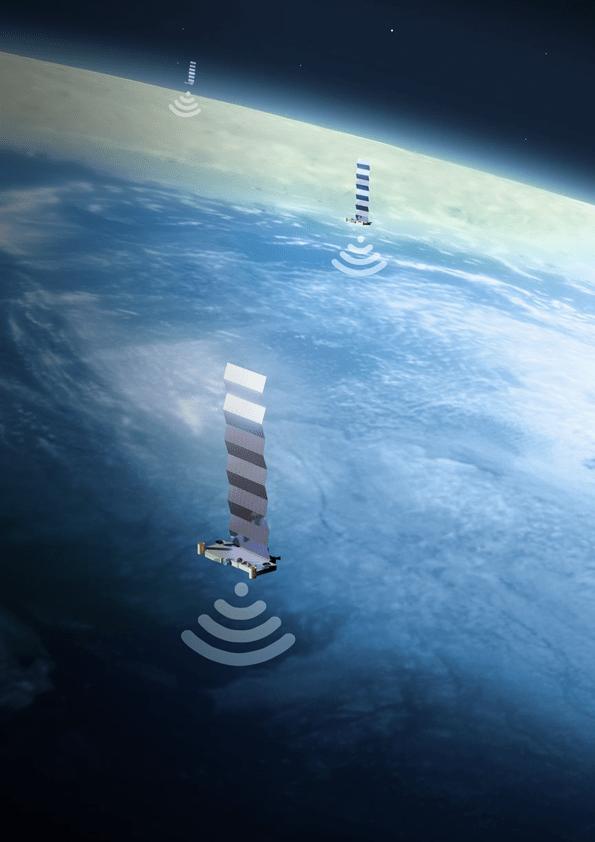 By Matt Woods
By Matt Woods
PAGE 21 2023 AUTUMN EDITION
Have you ever looked up at the night sky and seen a convoy of bright dots travelling silently through the sky? You might have wondered what the hell they are. Well, those bright dots are newly launched SpaceX Starlink satellites. SpaceX’s Starlink is a satellite internet constellation designed to provide high-speed internet access to users around the world, particularly in rural and remote areas where traditional internet infrastructure is not available.
Each Starlink satellite is about the size of a table and weighs around 227 kilograms. They operate in low Earth orbit, which is roughly 160 to 2,000 kilometres above the surface of the Earth. SpaceX typically launches between 40 and 60 satellites at a time with the satellites launching into orbit aboard Falcon 9 rockets from Kennedy Space Centre and Cape Canaveral Space Force Station, as well as Vandenberg Space Force Base which is used to launch Starlink satellites into polar orbits to provide complete global coverage.
As of March 2023, there are more than 4,000 Starlink satellites in orbit. The plan is to launch tens of thousands of Starlink satellites in the coming years. The company has already received approval from the FCC to launch up to 12,000 satellites and has applied for permission to launch up to 42,000 more.

PAGE 22 2023 AUTUMN EDITION
Falcon 9 launch. Image Credit: SpaceX
Starlink convey with the Australia Borealis.

2023 AUTUMN EDITION
Image Credit: Ronn Murray
The Starlink satellites are visible from Earth as a string of bright lights moving across the sky. They’re particularly visible shortly after launch while they’re still in a low orbit and traveling in a tightly packed formation. This is when we and radio stations get lots of calls, emails, and Facebook messengers from people who have seen this spectacular sight. After several days, the satellites will gradually spread out and rise to higher orbits, and they become less visible from the ground.

If you live in a region where Starlink service is available, you can purchase a Starlink kit from the Starlink website. The kit includes a satellite dish, a Wi-Fi router, and other equipment needed to connect to the Starlink network. The cost of the residential and roaming kits in Australia are currently heavily discounted from its normal price of $924 as it’s down to $450, there is also the monthly service fee of $174.
According to SpaceX, the service currently offers download speeds of 50-150 Mbps and upload speeds of 10-50 Mbps, with an average latency of 20-40 milliseconds. This makes it faster and more reliable than many traditional satellite internet services, which typically suffer from high latency and slower speeds due to their geostationary orbit.
In comparison, Australia’s National Broadband Network (NBN) offers a range of plans with download speeds ranging from 12 to 1000 Mbps, and upload speeds ranging from 1 to 50 Mbps. However, the speeds and availability of NBN services can vary depending on several factors, including pricing, location, plan type, and network congestion.

PAGE 24 2023 AUTUMN EDITION
Starlink dish. Image Credit: SpaceX
Starlink’s orbit compared to Geostationary Orbit. Image Credit SpaceX
Even during the ongoing conflict between Ukraine and Russia, Starlink has even been able to provide Ukraine with high-speed internet access free of charge as the internet infrastructure there was targeted from the start of the war. According to reports, the Starlink service has been used to provide reliable, high-speed internet access to troops stationed in remote areas where traditional internet services were unavailable or had been damaged in the fighting. The service has also been used by civilians in areas affected by the conflict, such as hospitals and schools.
While the satellites are doing a lot of good, there are issues with Starlink satellites, one of the main issues with Starlink is the potential impact on astronomical observations. The bright lights from the satellites can interfere with astronomical observations and make it more difficult to study the night sky. To address this issue, SpaceX has been working on making the satellites less reflective and reducing their brightness.
Another issue is the potential for space debris. With so many satellites in orbit, there is a risk of collisions and the creation of additional space debris. To mitigate this risk, SpaceX has implemented several measures, including regularly moving the satellites to different orbits and deorbiting them at the end of their operational life.
To see the Starlink satellites in the sky, you can use websites such as FindStarlink.com or Heavens Above to track their movements and find the best viewing locations. You will need to find a clear, dark viewing location away from city lights. The satellites are typically visible an hour and a half after sunset or before sunrise, when the sky is still relatively dark. They are generally visible to the naked eye, but you can use binoculars or a telescope to get a closer look.
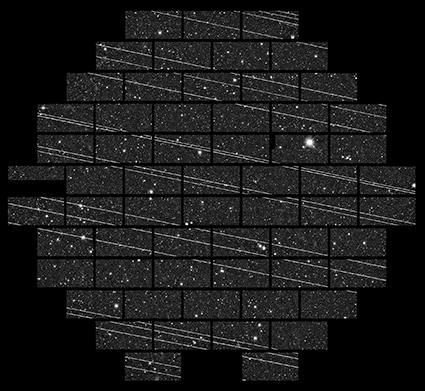
PAGE 25 2023 AUTUMN EDITION
in a
Signal pollution
333-second exposure image taken from the Blanco four-meter telescope
Join us for a very rare event – the Ningaloo solar eclipse! On the 20th of April 2023, we’ll be live-streaming the eclipse from Exmouth in Western Australia, in partnership with our friends at TimeAndDate.com.

As the Moon passes between the Earth and the Sun, we’ll be treated to the rare and beautiful sight of Baily’s beads and the diamond ring during totality. It’s a spectacular display of the power and beauty of the universe that you won’t want to miss!
Time And Date’s expert team will guide you through the event, providing insights and commentary on the eclipse as it unfolds. We’ll also share fascinating facts about solar eclipses and their significance throughout history and cultures around the world.
Join us for this unforgettable event and experience the magic of the Ningaloo Solar Eclipse from the comfort of your own home – we can’t wait to share it with you!
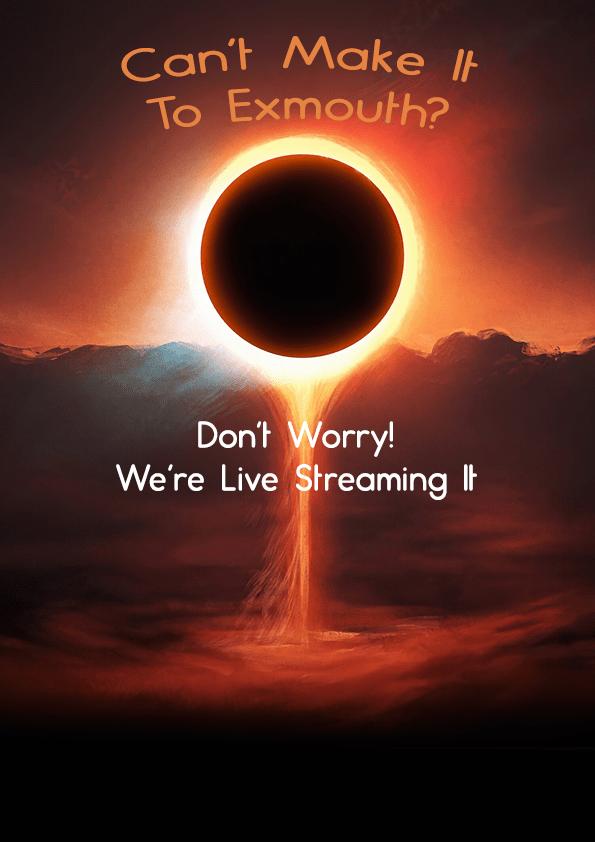
PAGE 26 2023 AUTUMN EDITION
Shooting The Eclipse Here’s What You Need To Know
 By Roger Groom
By Roger Groom
PAGE 27 2023 AUTUMN EDITION
Image Credit: CNN
A total solar eclipse is a rare and awe-inspiring event that can captivate anyone who witnesses it. The beauty and majesty of this natural phenomenon have been the subject of countless photographs, but capturing the perfect shot can be challenging. In this article, we’ll discuss some tips and techniques for taking photos during a total solar eclipse.
1. Plan ahead
The first step to taking great eclipse photos is to plan, both with regard to when/where/how and also photographic equipment. Research the eclipse path and plan a location with clear skies and an unobstructed view of the sun. For the April 2023 eclipse the sun will be high in the sky, making unobstructed views easy, but also making it more difficult to include the eclipsed sun in photographs with landscape elements.
As to the photographic equipment, a camera with a telephoto lens and sturdy tripod, or a telescope is essential for capturing the eclipse in detail. If using a camera and telephoto lens a portable tracking/telescope mount to track the sun would be useful. Make sure you have plenty of memory cards and spare batteries, and consider bringing a backup camera in case something goes wrong. Ideally you will trigger your camera via a cable release, connection to phone or computer, or intervalometer, to reduce camera shake.
2. Use a solar filter
It’s important to remember that looking directly at the sun, even during all partial phases of an eclipse can cause permanent eye damage. The same is true for your camera’s sensor, so it’s essential to use a solar filter when photographing the eclipse. A solar filter is a specially designed filter that blocks out most of the sun’s light, allowing you to photograph the eclipse safely. I use Baader Solar Film on my cameras and telescopes.
Make sure you purchase a high-quality solar filter from a reputable source and test it before the eclipse to make sure it fits your camera and lens correctly. In WA we have BinoCentral in Joondalup.

PAGE 28 2023 AUTUMN EDITION
Image Credit: Roger Groom
3. Choose the right exposure settings
Exposure settings are critical when photographing a solar eclipse. You’ll want to use a low ISO setting to reduce noise in your images. The shutter speed will vary depending on the focal ratio of your telescope or lens, ISO, and the filter you’re using, but you’ll typically be able to use a fast shutter speed, which will help prevent motion blur.
One set of exposure details will suit partial phases of the eclipse, and those can be prepared beforehand by practicing solar photography days or weeks prior.
During the total phase of the eclipse, you’ll need to adjust your settings. Without the solar filter, the sun’s corona will be visible, and you’ll want to use a longer exposure time to capture the intricate details of this phenomenon.
One approach is to prepare a large range of bracketed exposures. For example configure your camera to shoot -5, -2, 0, +2, +5 stop bracketed exposures, and then adjust your settings further.
It is possible to use software on your PC to orchestrate your eclipse photography exposure details. While more advanced, this approach can result in more consistent and during totality more efficient photography.
4. Experiment with different compositions
While a telephoto or telescope view of the eclipsed sun will show the most solar detail, consider the landscape and people around you, the changing light and it’s interaction with the terrestrial elements. A series of wide landscape photographs of the sun’s path during the eclipse can also work well.
In conclusion, taking photos during a total solar eclipse can be a challenging but rewarding experience. With the right equipment, preparation, and technique, you can capture stunning images that will be treasured for years to come. Just remember to stay safe and protect your eyes and camera with a solar filter.
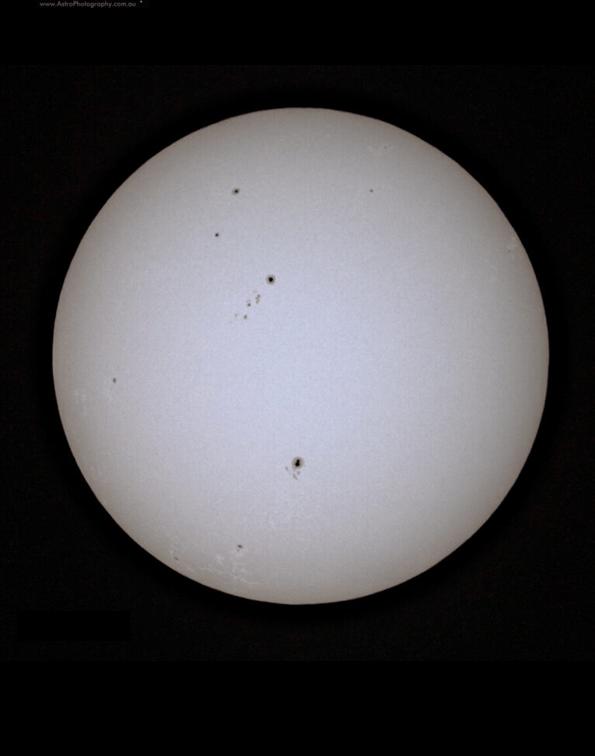
PAGE 29 2023 AUTUMN EDITION
Image Credit: Roger Groom
From The Desk Of The Program Manager
by Paul Wadham
New equipment for the School day tours.
It will be another busy year at the Observatory with the second year of funding from the State Government Grant via the Department of Jobs, Tourism, Science and Innovation (JTSI) has been approved. This budget includes money for:
New equipment for the School day tours. The completion of the replacement of the path lights to the viewing area.
The completion of the replacement of the path lights to the viewing area.
The completion of the Classroom
Money to improve our Night, solar and EAA viewing capabilities.
New PCs for the Office staff
The refurbishment of the museum is now complete looking fabulous and open to the public. Huge thanks to Lotterywest, and all the Staff and volunteers that made this happen.
The refurbishment of the Museum gave us the opportunity to create a digital copy of the “Atlas Coelestis”. The first stellar atlas based in telescopic observations, the Atlas Coelestis was published in 1729 ten years after the death of John Flamsteed, the first Astronomer Royal by his widow. The Digital copy is now available for viewing in the Foyer of the Observatory.
Regarding Lotterywest, the Interpretative signs for the site have now all been installed, the signs were designed inhouse and the frames were designed and created by “Angry Pander” a local metalwork artist. The frame design is based on the Perth Observatory logo. The signs have created a self-guided walk around the Observatory grounds.
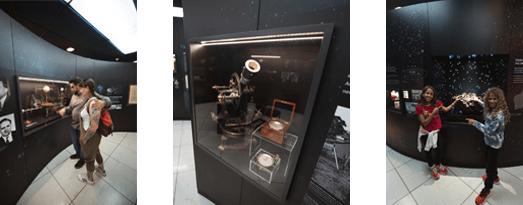
PAGE 30 2023 AUTUMN EDITION
Join our School Day Tours Team
Looking to volunteer and make a difference in the lives of primary school children? If you have free time during the day and a passion for learning about space and our solar system, we invite you to join our School Day Tours Team as a volunteer!

As a member of our team, you will have the opportunity to share your knowledge and enthusiasm with young students while learning from experienced educators. No prior experience is necessary, as we provide all the training you need.
All you need to bring is your enthusiasm, a friendly demeanor, and the ability to communicate with children. Our tours take place during school hours, so if you have some free time during the day and enjoy working with children, this could be the perfect opportunity for you!
To learn more about how you can get involved, click below and let’s start making a difference in the lives of young students today.

PAGE 31 2023 AUTUMN EDITION
Star Adoption Tours

Looking for a unique gift to recognize a special family member or friend? Look no further than our star adoption program! Our program allows you to adopt a star between magnitudes -1 and 7.9 in the Southern Hemisphere, visible to the naked eye or in binoculars.

Each star adoption package includes a certificate with the star’s name and coordinates, as well as the duration and purpose of the adoption. Plus, you and up to three guests can enjoy a private star viewing night within 12 months of the adoption, where you’ll get to see your chosen star and other seasonal objects. We’ll also provide you with a planisphere and star charts, so you can continue to enjoy your star long after your viewing night.
Please note that while we don’t offer international naming rights for stars, the income from our program goes towards supporting the Perth Observatory’s not-for-profit public outreach program. Adopt a star today and give the gift of wonder and discovery!
PAGE 32 2023 AUTUMN EDITION
What’s In April’s Skies
By Matt Woods
Planets:
As we move towards the middle of April, the evening sky is dominated by two bright planets - Venus and Mars. These two planets will be the only ones visible in the evening sky, while the other planets can only be seen in the early morning or just after sunset.
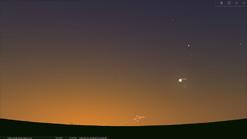
At the beginning of the month, Mercury can be seen low in the west in the constellation of Pisces (The Fish) just after sunset. It will then move into the constellation of Aries (The Ram) before disappearing into the Sun’s glare towards the end of the month. Mercury will reach its greatest elongation in the East on Friday the 29th of April before making its way back towards the Sun.
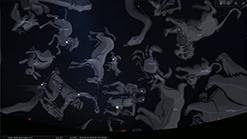
Venus, on the other hand, can be found in the north-west, moving from the constellation of Aries to Taurus at the end of the first week of the month. Mars, however, is located in the north in the constellation of Gemini (The Twins).
Jupiter appears low in the east in the constellation of Pisces (The Fish), just before the end of the month in the early morning. Meanwhile, Saturn can be seen in the east in the constellation of Aquarius (The Water-Bearer) during the early morning hours. Uranus can be found in between the constellations of Aries, Cetus (The Sea-Monster), and Taurus (The Bull) at the beginning of the month before disappearing in the Sun’s glare in the first week. Finally, Neptune can be spotted in the early morning sky in between the constellations of Pisces and Cetus.

PAGE 33 2023 AUTUMN EDITION
Saturn and Neptune on the 15/04/23 at 05:00 am. Image Credit: Stellarium
Mercury’s greatest elongation in the East on the evening of the 29/04/2023. Image Credit: Stellarium
Mercury, Venus, Mars, and Uranus on the 15/04/23 at 06:30 pm. Image Credit: Stellarium
Astronomical Events:

The Lyrids Meteor Shower:
On the night of April 22nd/23rd, while most of us are asleep, the Lyrids Meteor Shower will hit the Earth’s atmosphere at its peak. The Lyrids are the oldest observed meteor shower, with records of its observation dating back to at least 2,600 years ago in China. Described as “stars falling like rain” on the night of March 16th, 687 BC, the shower has become a minor one in recent times, with occasional surprises that keep it interesting.

The cause of the Lyrids is Comet C/1861 G1 (Thatcher), a long-period comet that orbits the Sun every 415 years. The comet was discovered by A.E. Thatcher on April 5th, 1861, during its last pass around the Sun. The Lyrids are active between April 16th and 25th and appear to come from the constellation Lyra.
To observe the Lyrids, look towards the constellation Lyra in the early morning hours when it’s at its zenith, highest point in the sky. Lyra will appear over the Perth hills around midnight, and it’s best to wait until around 03:00 am (AWST) when the constellation is at its highest point and the sky is at its darkest. Allow your eyes to adjust to the darkness for at least 15 minutes. While it’s best to go to a dark sky area outside of Perth, you can still enjoy a decent view by finding a park or large open space in Perth’s outskirts.
Fortunately, this year the Lyrids meteor shower won’t have to compete with the Moon as it’ll be a Waxing Crescent Moon, so there won’t be any extra light pollution. In a dark sky area, you should be able to see up to 18 meteors per hour.
Hyrid Solar Eclipse:
On April 20th, 2023, a rare astronomical event will occur over Exmouth, Western Australia, Timor Leste, and parts of Indonesia - a Total Solar Eclipse. For 62 seconds, the Moon will fully obscure the Sun. During a Total Solar Eclipse, the Moon blocks out the full disc of the Sun, which enables astronomers to study the Sun’s Corona and Chromosphere. Both parts of the Sun are normally invisible due to the extreme brightness of the Sun’s surface. There are four types of Solar Eclipses: Total, Annular, Partial, and Hybrid and the Ningaloo 2023 Solar Eclipse is the rare “Hybrid Eclipse”.
A hybrid eclipse is a type of solar eclipse that looks like an annular solar eclipse or a total solar eclipse, depending on the observer’s location along the central eclipse path. Observers in Exmouth will witness a Total Solar Eclipse during the 62 seconds of darkeness as th Moon casts a 41km wide path over the Western Australia’s North West Cape into darkness. During totality, the sky will become dark with stars and planets being visible, the air temperature drops, and animals may change their behavior.
PAGE 34 2023 AUTUMN EDITION
The Lyrids on the 22/04/23 at 04:00 am. Image Credit: Stellarium
Unfortunately for Perth, our position on the Earth means we’ll see a 70% Partial Solar Eclipse here. If you’re not heading up to Exmouth, Carnarvon, or Onlsow, we’ll be live streaming the eclipse with our friends at TimeAndDate.com from Exmouth, and we’ll have our own sold out eclipse event at the Observatory so you can safely see this rare astronomical phenomena.


Total
April’s Hybrid Solar Eclipse viewing map. Image Credit: timeanddate.com
Types of Solar Eclipses. Image Credit: timeanddate.com



PAGE 35 2023 AUTUMN EDITION
solar eclipse of 21 August 2017. Image Credit: ESO/P. Horálek/Solar Wind Sherpas Project
Sun, Moon, and Earth during a hybrid eclipse. Image Credit: timeanddate.com
Things To Look At This Month:

Jewel Box Cluster:
Located in the Crux (Southern Cross) Constellation, the Jewel Box (NGC 4755) is a stunning open cluster that is easily visible to the naked eye. It is situated 6,440 light-years away from Earth and spans an impressive 14 light-years in diameter. With just over 100 stars, the Jewel Box is considered a small cluster, but what it lacks in size, it more than makes up for in youth and brilliance.
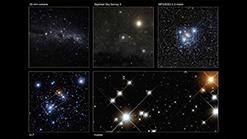
At an estimated age of just 14 million years, it is one of the youngest clusters known to astronomers, and it is home to some of the brightest stars in the Milky Way. These supergiants shine with such intensity that the red, white, and blue stars in the centre of the cluster are often likened to the lights of a traffic signal. Whether viewed through a telescope or binoculars, the Jewel Box is a true gem in the night sky that never fails to dazzle and delight stargazers.

PAGE 36 2023 AUTUMN EDITION
Jewel Box on the 15/04/23 at 09:00 pm. Image Credit: Stellarium
The Jewel Box in perspective. Image credit: ESO, NASA/ESA, Digitized Sky Survey 2 and Jesús Maíz Apellániz
NGC 4755 Jewel Box Cluster
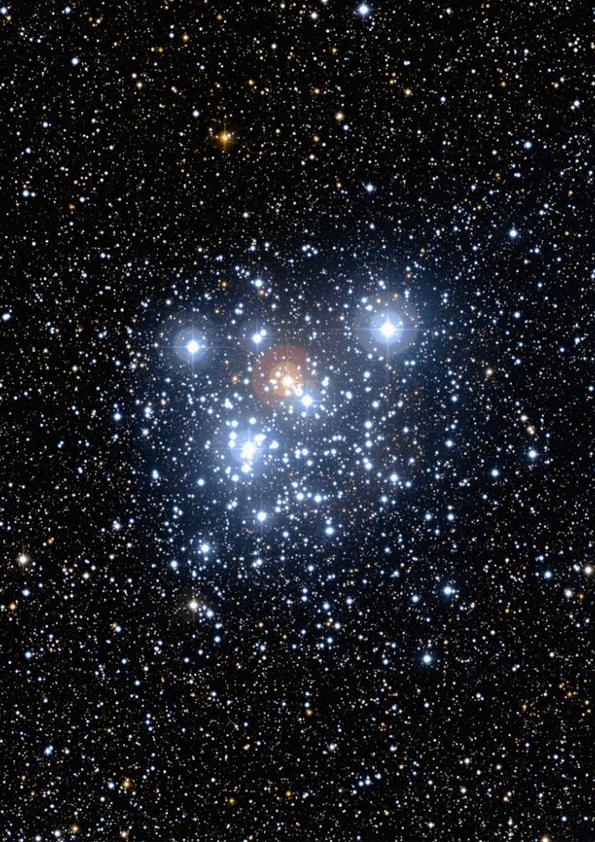 Image Credit: ESO
Image Credit: ESO
PAGE 37 2023 AUTUMN EDITION
What’s In May’s Skies
By Matt Woods
Planets:
Throughout the month of May, Venus and Mars continue to remain as the evening planets. Venus can be seen in the north-west, moving from the constellation of Taurus (The Bull) to join Mars in the constellation of Gemini (The Twins) at the end of the first week of the month. Mars, in turn, will then move from the constellation of Gemini to the constellation of Cancer (The Crab) in the middle of the month.
Mercury, on the other hand, can be spotted low in the east in the early morning, below Jupiter, in the constellation of Aries (The Ram), during the middle of the second week of the month. Mercury will reach its greatest elongation in the West on Monday the 29th of May before making its way back towards the Sun. Jupiter, on the other hand, is low in the east in Pisces (The Fish) but will be moving to join Mercury in Aries towards the end of the third week of the month.

Saturn can be seen rising around midnight in the north-east in Aquarius (The Water-Bearer), providing a mesmerizing view for the stargazers. Uranus, which had disappeared early in April, will reappear in the early morning in the constellations of Taurus by the end of the month.
Lastly, Neptune can be found in the early morning sky in between the constellations of Pisces and Cetus (Sea-Monster), offering a unique view of the night sky.
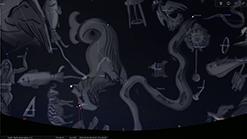

PAGE 38 2023 AUTUMN EDITION
Mercury, Jupiter, Saturn, and Neptune in alignment on the 15/05/23 at 06:00 am. Image Credit: Stellarium
Venus and Mars on the 15/05/23 at 07:00 pm. Image Credit: Stellarium
Mercury’s greatest elongation in the West on the evening of the 29/05/2023. Image Credit: Stellarium
Astronomical Events:
The Eta Aquarids Meteor Shower:
The Eta Aquarids Meteor Shower will reach its peak on the night of May 6th/7th, providing skywatchers with a chance to witness one of nature’s most impressive displays. This meteor shower is active from April 19th to May 28th and is caused by the famous Comet Halley. The Eta Aquarids are one of two meteor showers caused by this comet, with the other being the October Orionids. Halley takes 75 years to orbit around the Sun, and it will enter the inner solar system again in 2061.
The meteors will seem to originate from the Aquarius constellation, giving the meteor shower its name. If you’re located in the Perth hills, Aquarius will appear in the sky at around 11:30 pm, and the best time to watch the meteor shower is around 4:00 am (AWST). Be sure to give your eyes at least 15 minutes to fully adjust to the lighting conditions and look between the North and Northeast for the best view. While it’s ideal to find a nice park or large open space for optimal viewing, you can still get a good view from your front or back yard. However, this year the Full Moon will be in the sky throughout the night, creating a lot of light pollution that may limit the number of meteors visible.
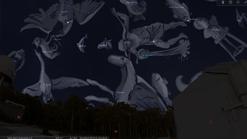
Penumbral Lunar Eclipse:
On May 6th, 2023, a Penumbral Lunar Eclipse will occur just over two weeks after the total solar eclipse that occurred over Exmouth in Western Australia. This type of lunar eclipse occurs when the Moon passes through the Earth’s outer shadow, known as the “penumbra” (From the Latin paene ‘almost, nearly’). During this event, the Moon will appear slightly darker than usual, as it will only be partially covered by the penumbra.


This penumbral lunar eclipse will be visible from most parts of the world, including North and South America, Europe, Africa, Asia, Australia, and New Zealand. A penumbral lunar eclipse is not as spectacular as a partial or a total lunar eclipse, but it still offers a unique opportunity to witness a rare astronomical event. Skywatchers will be able to see the subtle changes in the Moon’s brightness and colour as it passes through the penumbra. However, these changes will be quite subtle and may be difficult to discern without careful observation.
To observe the penumbral lunar eclipse, no special equipment is required. The eclipse will be visible to the naked eye from most locations, weather permitting. It is best to find a location with an unobstructed view of the Moon, away from any bright city lights that may interfere with visibility. With a little patience and a clear sky, skywatchers will be able to witness the beauty of the universe in action.
PAGE 39 2022 AUTUMN EDITION
The Eta Aquarids on the 06/05/23 at 05:00 am. Image Credit: Stellarium
May’s Penumbral Lunar Eclipse viewing map. Image Credit: timeanddate.com
Things To Look At This Month:

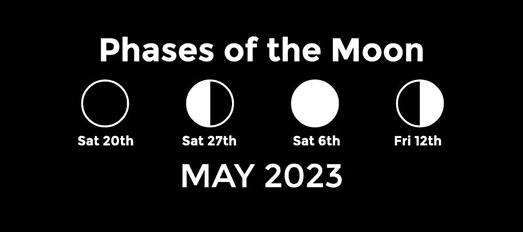
Southern Pinwheel Galaxy:
The Southern Pinwheel Galaxy, also known as Messier 83 and NGC 1365, is a barred spiral galaxy located in the southern constellation of Fornax. It is considered one of the most spectacular galaxies visible in the southern hemisphere and is a favourite target for both amateur and professional astronomers. The galaxy is about 60 million light-years away from Earth and has a diameter of approximately 200,000 light-years. The galaxy gets its name from its distinctive shape, which resembles a spinning pinwheel. The central bar of the galaxy is surrounded by a tightly wound spiral arm pattern that gives the galaxy its characteristic appearance. The spiral arms are populated by a multitude of bright, young stars that are actively forming, as well as dense pockets of gas and dust that serve as the raw materials for future star formation.
The Southern Pinwheel Galaxy is also notable for its supermassive black hole at its centre, which has a mass estimated to be several million times that of the Sun. This black hole is thought to be responsible for the intense radiation emanating from the galaxy’s centre, which can be observed in X-rays and other wavelengths of light. In addition to its beauty and scientific importance, the Southern Pinwheel Galaxy has also played a role in our understanding of the universe’s history. In 1987, astronomers observed a supernova in the galaxy, which provided important data on the expansion of the universe and the rate at which it is accelerating.

PAGE 40 2023 AUTUMN EDITION
Southern Pinwheel Galaxy on the 15/05/23 at 09:00 pm. Image Credit: Stellarium
Image Credit: NASA, ESA, and the Hubble Heritage Team (STScI/AURA)
Messier 83
The Southern Pinwheel Galaxy
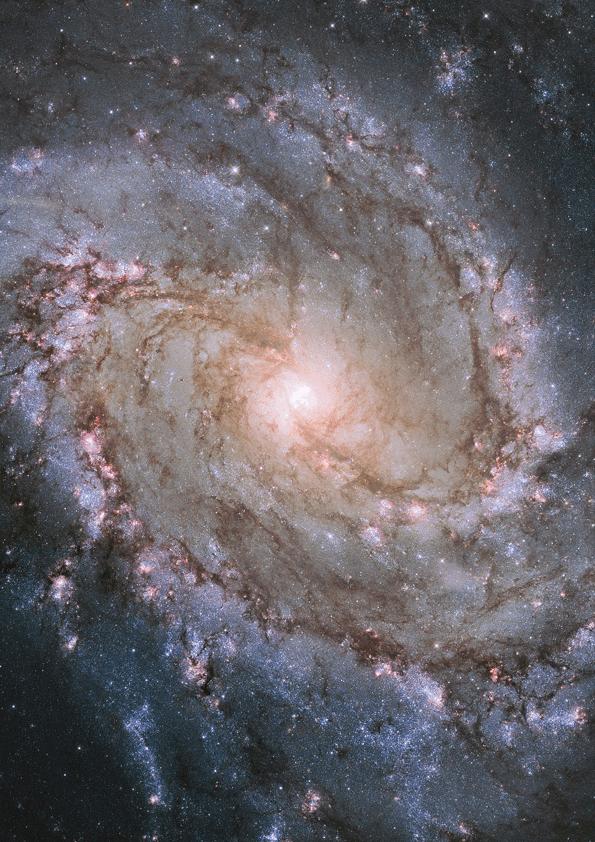
PAGE 41 2023 AUTUMN EDITION
What’s In June’s Skies
By Matt Woods
Planets:
As we move into the month, Venus and Mars continue to be the only evening planets to grace the night sky. Venus can be seen in the north-west, moving from the constellation of Gemini (The Twins) to join Mars in the constellation of Cancer (The Crab) after the first few days of the month, and then will continue chasing Mars into the constellation of Leo (The Lion) near the end of the month. On Sunday the 4th of June, Venus will reach its greatest elongation in the East before gradually making its way back towards the Sun.
Mercury, on the other hand, can be spotted low in the north-east, moving from the constellation of Aries (The Ram) to Taurus (The Bull) at the end of the first week of the month, before gradually fading into the morning twilight towards the end of the third week of the month. Jupiter can be seen in the northeast in Aries, above Mercury, while Saturn can be seen in the northwest in Aquarius (The Water-Bearer). Uranus, on the other hand, will be visible in the constellations of Taurus by the end of the month. Lastly, Neptune can be found in between the constellations of Pisces and Cetus (The Sea Monster), providing an enchanting view for stargazers who are keen on exploring the night sky.

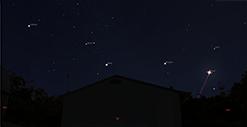


PAGE 42 2023 AUTUMN EDITION
Mercury, Jupiter, Saturn, Uranus, & Neptune on the 15/06/23 at 06:00 am. Image Credit: Stellarium
Venus and Mars on the 15/06/23 at 07:00 pm. Image Credit: Stellarium
Venus’s greatest elongation in the East on the evening of the 04/06/23. Image Credit: Stellarium
Moon, Mercury, Jupiter, Saturn, Uranus and Neptune on the 12/06/23 at 06:00 am. Image Credit: Stellarium
Astronomical Events: The June Solstice:

The June Solstice marks an astronomical event that occurs twice a year, with the next one taking place on Wednesday the 21st of June at 10:57 pm (AWST). It signifies the beginning of winter in the southern hemisphere and the start of summer in the northern hemisphere. This event happens when the Sun’s declination equals 23.5 degrees south as observed from Earth. The Tropic of Cancer is the line of latitude where the Sun passes directly overhead during the June solstice, although in modern times, the Sun is in the astronomical constellation of Gemini in mid-June due to precession.

During the June solstice, the southern rotational pole of the Earth is tilted away from the Sun, initiating its long apparent journey northward until December. The wobbling of Earth’s axis, known as the Precession of the Equinoxes, takes about 26,000 years to complete one full cycle. This means that over the average lifespan of 72 years, the equinoctial points would have moved one degree, which is approximately twice the diameter of a full Moon.
The June Solstice is an essential event for astronomers as it helps in understanding the mechanics of the Earth’s axial tilt and its impact on the Earth’s climate and seasons. Many cultures celebrate the June solstice with festivals and traditions, including the ancient Druids who celebrated it as the “Alban Heruin” or “light of the shore.”
Things To Look At This Month:
Trifid Nebula and Lagoon Nebula:
The Trifid Nebula and Lagoon Nebula are two of the most famous and beautiful celestial objects in the southern sky. Both nebulae are located in the constellation of Sagittarius and are relatively close to each other in the sky. They are popular targets for amateur astronomers and can be observed with binoculars or a small telescope.
The Trifid Nebula, also known as Messier 20 and NGC 6514, is an emission and reflection nebula that is located approximately 5,200 light-years away from Earth and is 15 light-years across. The name “trifid” refers to the three dark lanes that divide the nebula into different sections. The nebula contains a cluster of young stars, which are responsible for illuminating the gas and dust in the nebula. The Trifid Nebula is particularly striking because of its vivid pink, red, and blue colours.
PAGE 43 2022 AUTUMN EDITION
Venus’s greatest elongation in the East on the evening of the 04/06/23. Image Credit: Stellarium
Moon, Mercury, Jupiter, Saturn, Uranus and Neptune on the 12/06/23 at 06:00 am. Image Credit: Stellarium
The Lagoon Nebula, also known as Messier 8 and NGC 6523, is an emission nebula that is located approximately 4,100 light years away from Earth, and it’s been estimated to be 100 light-years wide and 50 light-years high. A very young nebula, perhaps less than 10,000 years, it’s named after the lagoon-shaped dust lane that runs through its centre. The Lagoon Nebula is also home to a cluster of young stars, which are responsible for illuminating the gas and dust in the nebula. The colours of the Lagoon Nebula range from deep red to blue-green.

Both the Trifid and Lagoon Nebulas are active regions of star formation, and are rich in molecular gas and dust, with the Lagoon Nebula containing many “Bok globules” forming stars. In addition, the Trifid and Lagoon Nebulas are both part of the larger Sagittarius Molecular Cloud complex, which is one of the largest and most massive molecular clouds in the Milky Way.



PAGE 44 2022 AUTUMN EDITION
Trifid and Lagoon Nebulas on the 15/06/23 at 09:00 pm. Image Credit: Stellarium
Hubble Optical image of the Lagoon Nebula. Image Credit: NASA, ESA, and STScI
The Trifid Nebula. Image Credit: Subaru Telescope (NAOJ), Hubble Space Telescope, and Martin Pugh
Messier 20 & Messier 8
The Trifid Nebula and Lagoon Nebula
 Image
Credit: Andrew Lockwood
Image
Credit: Andrew Lockwood
PAGE 45 2023 AUTUMN EDITION
Telescopes Under

Western Australia’s Skies

Looking for an unforgettable night under the stars? Look no further than Perth Observatory’s offsite astronomy nights! As Western Australia’s leading observatory, our experienced volunteers are dedicated to sharing the beauty and wonder of the night sky with people all across the state.
Our team will bring their top-of-the-line telescopes and expertise to your town, suburb, or school, providing you with a unique and immersive journey through the Southern Hemisphere’s celestial wonders. You’ll be guided through the night sky with the help of our powerful green laser, learning about the stars, planets, nebulas, dying stars, and enormous star clusters that populate our universe.
Whether you’re an astronomy enthusiast or simply looking for a fun and educational experience, our offsite astronomy nights are the perfect way to explore the beauty and complexity of our universe. Request your night under the stars below and discover the magic of Perth Observatory!
PAGE 46 2023 AUTUMN EDITION
A Quick Look In The Astroshop!
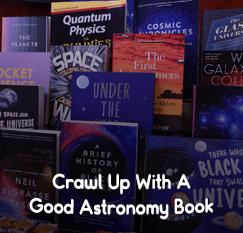




PAGE 47 2023 AUTUMN EDITION






PAGE 48 2023 AUTUMN EDITION
Sunday Guided Day Tours

Discover the secrets of the universe and the rich history of Perth Observatory on our Sunday guided day tour! Nestled in the stunning bush settings of Bickley, our Observatory is the perfect place to explore the wonders of the cosmos.
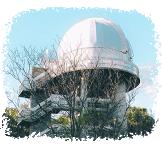
Our knowledgeable guides will take you on a journey through time, from the Observatory’s humble beginnings in 1896 to its move to Bickley in 1966 and beyond. You’ll get to tour the Meridian, Astrograph & Calver Telescopes, learn about timekeeping, and explore the museum to discover fascinating stories about the Observatory’s past and present.
And if the weather permits, you’ll have the opportunity to safely observe the Sun and its sun spots. It’s an experience you won’t want to miss!
With no need to book, simply come up between 1 and 4 pm and pay in our shop. Our Sunday day tour is the perfect way to spend a relaxing afternoon with family and friends, surrounded by the beauty of nature and the mysteries of the universe.
Join us for an unforgettable experience at Perth Observatory – we can’t wait to show you the wonders of the cosmos!
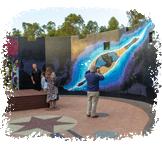

PAGE 49 2023 AUTUMN EDITION
NGC 2264
The Cone Nebula, Fox Fur Nebula, and Christmas Tree Cluster
 Image
Credit: Ronny Kaplanian
Image
Credit: Ronny Kaplanian
PAGE 50 2023 AUTUMN EDITION

PAGE 51 2023 AUTUMN EDITION

PAGE 52 2023 AUTUMN EDITION
CONTAINERS FOR CHANGE
Help Perth Observatory through the Containers for Change scheme.

Please take glass, plastic, aluminium, steel and paper-based cartons between 150mL and 3L to your local refund depot, and use the Perth Observatory (Scheme ID: C10424615).

POVG will receive 10 cents for each container. Save the ID on your phone for every time you recycle your containers. Find your local refund depot and get more info on what containers are eligible for refunds here:
containersforchange.com.au/wa
Can’t get to a refund centre? We have a dedicated and labelled bin on-site for you to add your clean container donations when you next visit the observatory.
Our maintenance and accounts volunteer, Des, collects donated containers and takes them to the refund centre.
Thank you for helping the POVG promote sustainable and environmentally conscious practices and diversifying ways for us to raise much-needed funds.
Your help supports the continuing upkeep and running of Western Australia’s oldest observatory!

PAGE 53 2023 AUTUMN EDITION SUPPORT PERTH
OBSERVATORY
The Funny Side
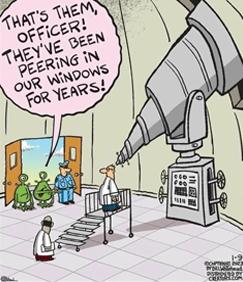



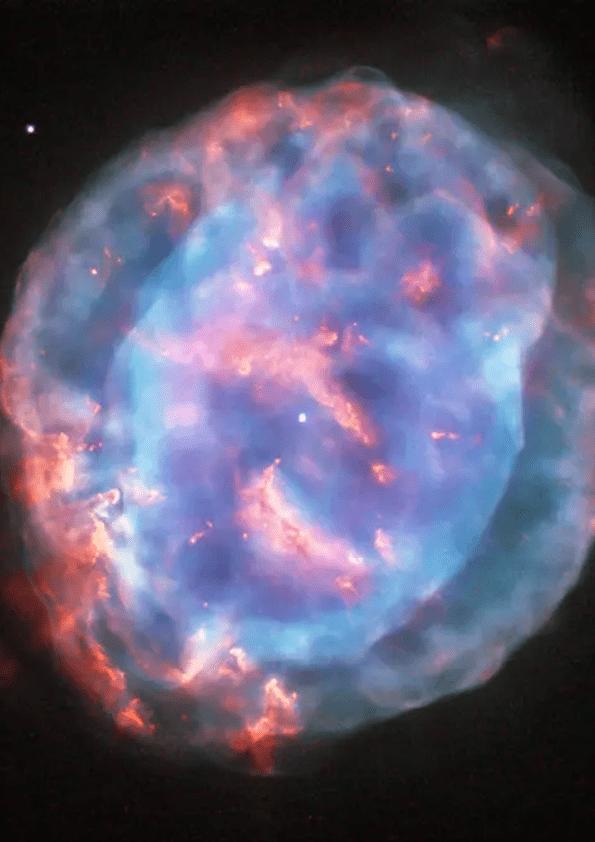
PAGE 54 2023 AUTUMN EDITION
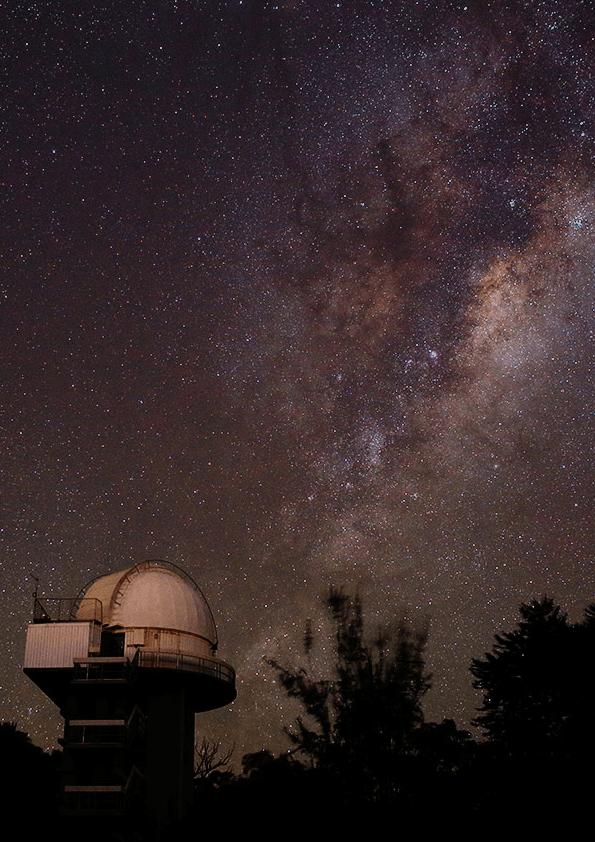

Contact Us Perth Observatory 337 Walnut Road 6076 Bickley, WA (08) 9293 8255 newsletter@povg.org.au perthobservatory.com.au












 By Matt Woods
By Matt Woods







 By Matt Woods
By Matt Woods




 By Matt Woods
By Matt Woods






 By Roger Groom
By Roger Groom


















 Image Credit: ESO
Image Credit: ESO

















 Image
Credit: Andrew Lockwood
Image
Credit: Andrew Lockwood















 Image
Credit: Ronny Kaplanian
Image
Credit: Ronny Kaplanian











